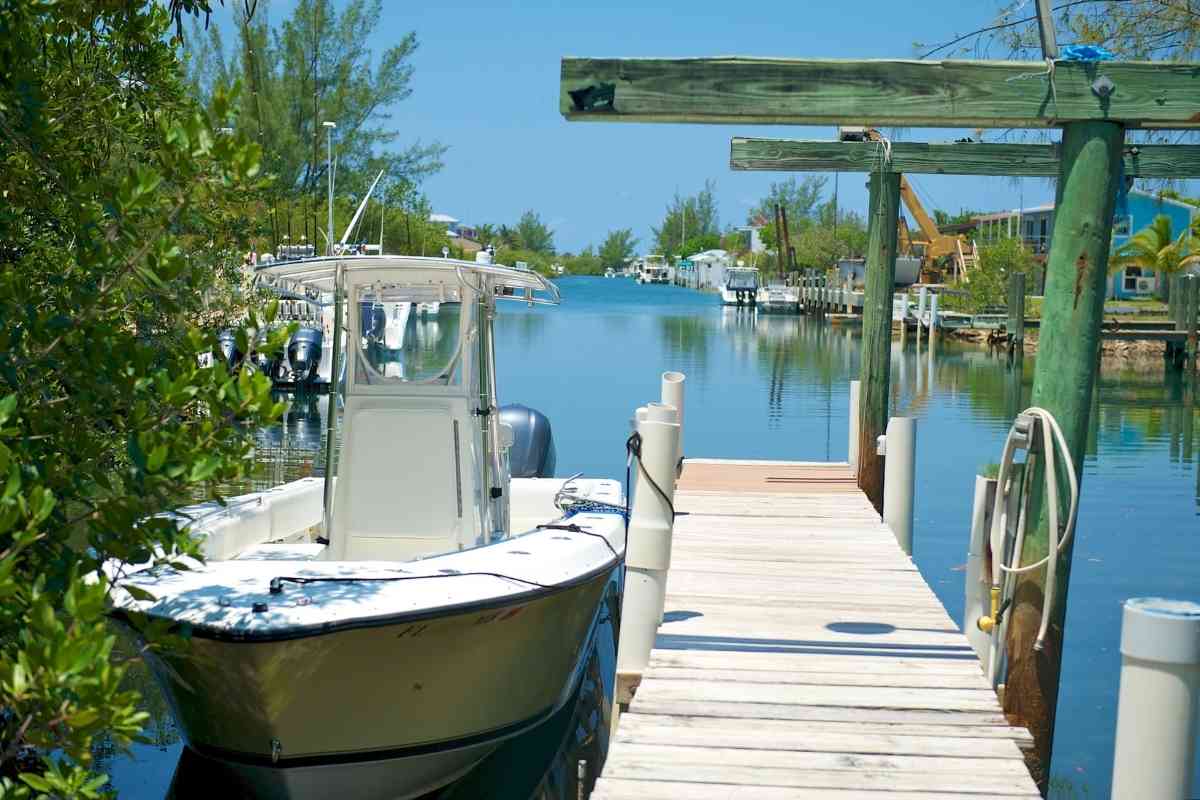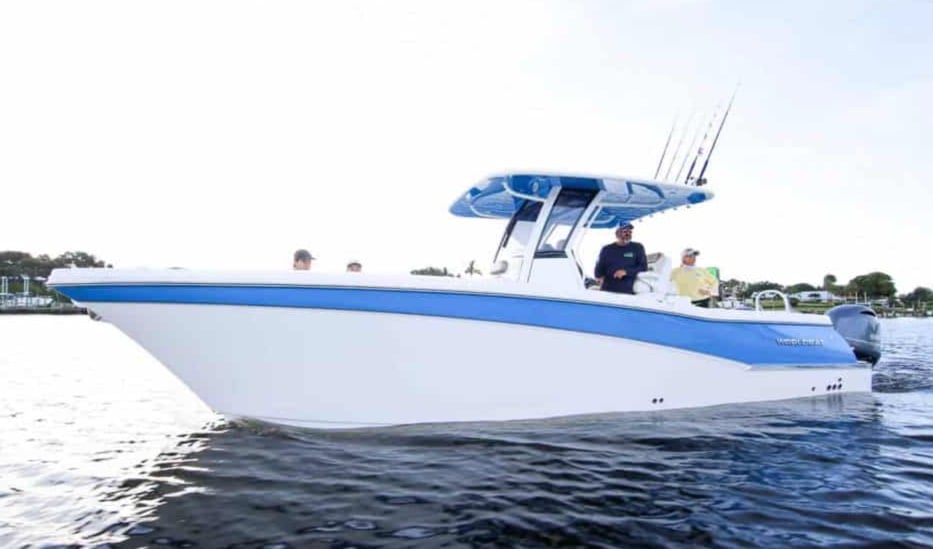Can Wakeboard Boats Go In The Ocean?
The ocean is huge and it is okay if you fear a small wakeboard boat would not survive there. If you are used to wakeboarding in the lake, you may be wondering whether it is safe to take your boat in the ocean. This article is a complete guide on how to bring your boat in the ocean.
Can Wakeboard Boats Go In The Ocean?
Yes. You can bring your wakeboard boat in the ocean and enjoy large wakes, more buoyancy, and sport in a less crowded area.
Your small boat can go in the ocean as long as the waves are not huge, the weather is calm, and the boat has the needed safety features.
Taking your boat out in the ocean gives you the satisfaction of large wakes, but it also allows you to wakeboard in a less crowded area.
If you wakeboard in a small local lake, the ocean will give you endless possibilities to wakeboard. But is your boat good enough to allow offshore wakeboarding?
Is Your Boat Good Enough for Offshore Wakeboarding?
The best size for offshore wakeboarding boat is between 17 and 25 feet long. You can go with a smaller boat, but it will be more risky, especially when the waters get rough.
You can also go with a bigger boat, but these are not ideal when you are wakeboarding.
With a large wakeboarding boat, the captain of the boat will need to not only now the waters but also understand wakeboarding.
Such a larger boat would feel safer, but it may not offer the ride you need as a wakeboarder.
With the increasing demand for offshore wakeboarding boats, boat manufacturers are creating boats that can go in the ocean. Such of the features that make these boats great include:
Hull Design
Small boats that go into the ocean have a modified hull instead of the deep V hull. The modified V gives the boat a steeper deadrise angle of between 17 and 20 degrees instead of the 26-degree angle. This deadrise makes the boat ride smoothly in the ocean.
This modified V offers a damping effect and also makes the boat stable.

Fuel Capacity
One major problem of small wakeboard boats is fuel capacity. You do not want to be stuck at sea because your vessel ran out of fuel. Most modern boats have larger fuel tanks, and they also allow you to carry more fuel.
On the bright side, if you have a small boat, it will be highly efficient, and you can take it out all day, and it will consume only a small fuel. Besides fuel, you need a marine battery replacement.
The battery should be forward beneath the console and away from the transom where it can add uncalled for weight.
Positive Floatation
If your boat is less than 20 feet, the National Marine Manufacturers Association requires that your boat has positive floatation.
Most of the small boats today fill hulls with foam to make the boats almost unsinkable. In case of an emergency, water cannot force air out of the foam, but it can force it out of the hull.
Self-Bailing
You should never go offshore with a boat that is not self-bailing. A good boat for wakeboarding in the ocean should be able to drain water immediately that water comes in to the hull. If that doesn’t happen, you will have a lot of work draining water with a bucket or your boat will capsize.
Larger Freeboard
The design and height plays a big role when you are picking a boat for going into the ocean.
A boat with a tall freeboard is safer in the ocean as it can withstand waves better. Again, small boats with a short transform are likely to capsize if the waves are huge and water gets into the boat.

You need a boat with a full transom instead of a cut-out transom. Cut-out transom boats might still work if they have a good motorwell.
If you have a boat with a cut-out transom and no motorwell, you should avoid bringing it for ocean wakeboarding.
The Engine
An outboard motor is the best for the ocean, but it is not so safe for wakeboarding as the propeller is exposed.
You can go for a stern drive engine that offers the power and the fuel economy you need. A single engine will work just fine, but a double engine is safer when you go in the ocean.
If your boat is too small, a second engine may not be ideal as it adds to much weight. Instead, you can get an auxiliary engine, a kicker.
You also need to bring a second battery in case the first battery goes dead and you are in the middle of the ocean.
What Safety Features Do You Need to Take Your Boat Offshore?
The ocean is rougher than the lake. Lakes are calm and even the currents are not as dangerous as in the ocean. You need to equip your boat with the necessary safety features to ensure that you are safe.
In most cases, you will not see any other boat close to you. If you venture more than few miles in the ocean, you are all alone with your captain.
If you bring family, friends, or your pet, you need to ensure that they are safe onboard. Some of the safety equipment that you need include:
Fixed-Mount VHF Radio
A fixed mount VHF radio allows you to communicate with people up to 20 miles away. On the other hand, a handheld radio only allows you to communicate up to eight miles away. I recommend that you do not go more than 20 miles off the shore.
New VHFs come with digital selective calling (DSC), which allows them to make a distress call anywhere in the world. Ensure the DSC is set before you leave port. You can also bring your cell phone, but still ensure you bring the radio.
Navigation Devices
A GPS plotter and a compass are two important navigation devices for the wakeboarding in the ocean.
If your GPS fails, you will have the compass with you, and you can always find your way home.
Emergency Beacons
In case of an emergency, you need a way to signal for help. As such, bring an Emergency Position Indicator Radio Beacon and a Personal Locator Beacon.
If you are in an emergency, you only need to activate these devices, and they will send a digital signal that assists in the search.
Life Jacket or Floatation Device
It is illegal to bring your boat offshore without a Coast Guard approved life jacket or a floatation device. It is also risky to do that as anything can happen out there. You need a wearable floatation device and a throwable floatation device in case you fall when wakeboarding.
Emergency Kit and First Aid Kit
An emergency kit includes a flare gun, waterproof strobe lights, and cyalume sticks. You also need to ensure that the boat’s lights are in working condition as the ocean can get foggy.
The first aid kit comes in handy if you sustain minor injuries while wakeboarding many miles offshore.
Anchor and Line
In case of an emergency, you need to anchor the boat in position as you wait for help. Again, you may need to be towed and a line comes in handy in that case.
Other items that you need to bring include emergency food and water. In case you are stuck in the ocean and you need help, stay hydrated as you wait for help.
Does the Weather Matter?
The weather determines whether you can bring your boat in the ocean and how far off the shore you can go. You will feel the rage of the ocean during a storm or when there are high tides.
Before you leave port, check and recheck the weather forecast and then bring a device that will enable you to keep track of the weather. If the weather gets rough, small boats suffer the most as they cannot handle the tides without moving side to side and risking capsizing.
When you go wakeboarding in a 17- to 25-footer, you have to accept that there will be several days when you cannot go wakeboarding because the weather is rough.
The weather service can revise the weather data anytime, and you need to ensure you check the data every time before you leave port.
There are days when the ocean is dead-calm and these are the best days to bring your wakeboard boat in the ocean.
Closing Thoughts
Whether it is just you and the captain, or you have friends, family, and your pet in the trip, you need to take the necessary precautions to keep yourself safe.
These safety precautions start with hiring an experienced captain. A captain who knows the waters and has been out there for a long time will help you get the best from your off-shore trip.
If you are ever in doubt, not knowing whether the weather is right, do not go out. Note that, your boat should have corrosion-resistant parts, or you have to clean it after the trip. Enjoy your offshore wakeboarding.


